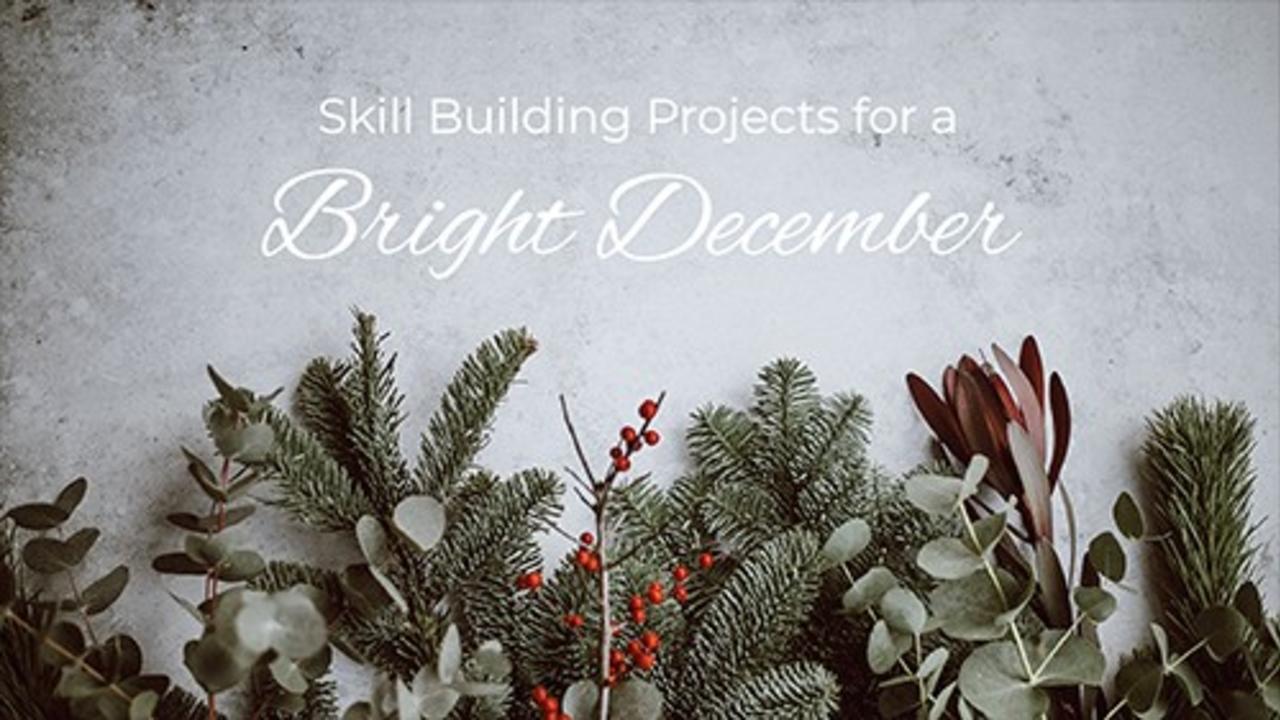Confidently Create Garments that Fit
The Armhole Sleeve Connection
Oh those sleeves!
If you've been struggling with fitting sleeves you are in exactly the right place. Today is the day you'll get the guidance and insight you need to make those sleeves fit. In this video you're going to discover what a good fitting armhole looks like and how each part of the sleeve relates to the armhole it is set to.
Before we can even consider the sleeve we must first consider the armhole the sleeve will be set to. For the purpose of this video, I'll be talking specifically about a standard set in sleeve for woven garments and using the Kayla sewing pattern from my Fitting Essentials online course as an example.
A good armhole for a standard set-in sleeve is dependent on getting a lot of things right on the bodice. The shoulder slope, the armhole depth, the across back, the across front and the armhole width all must be correct before you can begin to assess sleeve fit.
Watch the video now to take a look at what a good armhole might look like on your pattern and ...
Three Ways to Determine Your Cup Size
What's your cup size?
I'm sure this isn't a question you get often but the answer is really important if you want to achieve a good fit on the garments you create. Keep watching to discover three ways to determine your cup size and why one method might work better for you than the others.
Cup Size Theory
Before we dive into the three ways to determine your cup size, let's talk about the theory behind cup sizing. The theory goes like this: Each cup size represents a change in breast size or bust projection of 1.25 cm or ½".
In our little sewing world this means that the front bodice width and length must increase or decrease to accommodate the various cup sizes. If your cup size doesn't match that of the sewing pattern you will need to make a bust adjustment. In order to make that adjustment, you'll need to know your personal cup size. I'd like to share three methods to determine your cup size and provide some insight as to why one method may work better than another for you.
Bod...
February 2021 Live Q&A
I'm pleased to bring you the replay of the Live Q&A from February 11, 2021!
In this session I wanted to clarify the concept of garment balance and show you how you can use the balance lines to assess the fit a a garment. I hope you'll join me in thanking Tracy for allowing me to use her fitting photos.
Settle in with a cup of tea or a glass of wine and watch, there are definitely advanced fitting concepts covered in this session.
Here are the links to the extra resources mentioned throughout the session:
Three Advanced Strategies to Achieve the Fit You Want: Register Here
In-House Patterns Studio Facebook Group
How to Prepare Your Pattern for Fitting Part 1 and Part 2
Enjoy!
All My Best,
Alexandra
January 2021 Live Q&A
Thank you to everyone who joined in on the Live Q&A Session on January 21, 2021! I am pleased to share the recording with you today.
We chatted about where I'll be focusing my energy this year and shared information about the upcoming Fitting Essentials enrolment dates, current online course offerings, In-House Patterns sewing patterns and the new courses I'll be developing this year.
As promised here are the links to those resources:
Fitting and Pattern Making Tutorials
On Demand Online Courses:
The Custom Stretch Knit Bodice
Designed to Fit: The Bodice Block
Sewing Patterns: https://inhousepatterns.com/
Fitting Essentials Size Chart (sizes 2-14 and 12-24) All new sewing patterns will be available in these sizing categories.
Standard Size Chart (Sizes 0-16) Legacy sewing patterns in original pattern sizing.
Private Facebook Group: https://www.facebook.com/groups/inhousepatternsstudio
The Q&A portion of the live was approximately ...
Skill Building Projects for a Bright December

2020 feels like a guest who has overstayed their welcome!
I for one can't wait until December 31st, when I can usher this crazy year to the door. While it has been challenging to navigate this year, there is always some good that comes with the bad and I am choosing to concentrate on that, so I am keeping hope alive for a much better 2021.
Since 2020 is sticking around for a few more weeks and our Holiday time is likely going to look different than previous years, I thought I would highlight some of the projects you might like to work on to make these last few weeks go as quickly as possible.
Pick Up a Pattern
The Chelsea top has always been one of my favourites and if you want something a little dressier than a t-shirt, make it in lace like I did. The Chelsea pattern is a PDF sewing pattern available in sizes 0-16.
With all patterns on sale, this is a great opportunity to try the Lila top.
Lila is a Fitting Essentials pattern (available in sizes 2-14 and 12-24) that featur...
Fitting Pants: How to Find the Balance Lines on a Pant Pattern
If you’re on my email list you already know that this week I’ll be showing you how to find the balance lines on the In-House Patterns Ellen pants. If you’d like to follow along with your own version of the Ellen pant pattern you can find the pattern HERE. If you’re working with another pant pattern you’ll get some insight on how to find the balance lines on that pattern too.
In the video I share details on finding the balance lines on the size 8 Ellen sewing pattern by In-House Patterns. If you're using another size use the information in the chart below to guide you in placing the Hip, High HIp and Calf balance lines on the size you're working with. Follow the video lesson for the method and the process of finding all the other balance lines.
|
In-House Patterns Ellen Pant |
0 |
2 |
4 |
6 |
8 |
10 |
12 |
14 |
16 |
|
Knee to Hip |
15 ½" |
15 ⅝" |
15 ¾" |
15 ⅞" |
16" |
16 ⅛" |
16 ¼" |
16 ⅜" |
16 ½" | ...
Solving Back Contour Issues: How to Move a Back Yoke Seam
If you caught last weeks video tutorial you’ll know we began a discussion about back contour shaping on a pattern with a back yoke. In that video I shared a method of removing the yoke seam so that you could better understand how to make a standard rounded back adjustment. This week I wanted to talk about the best position for a yoke seam line and how to customize it for your body.
The back yoke is a great styling choice when you have a rounded back because it allows you to shape the back by creating an invisible dart in the yoke seam. This invisible dart, hidden in the seam, has the ability to give you a more refined fit but like a dart the styling will work best if the yoke seam is addressing the most prominent area of the back. If the yoke seam is too high or too low, you may find that you are not achieving the fit you hoped for.
The most prominent area of the back spinal curve usually occur between 2 1/2” to 5” below the base of neck. (That’s about 6 to 13 cm.) On someone with a ...
Solving Back Contour Issues: How to Eliminate a Back Yoke Seam
You might be quite familiar with making adjustments to a pattern to accommodate a more rounded back than what the pattern has been designed for. On a basic pattern with a shoulder dart, the method is well documented and I’ve even created a video tutorial on this as well, but what do you do when the style has a back yoke?
Join me today to learn how to eliminate a back yoke seam to better understand how to alter the pattern for more prominent back contour shaping.
Watch the video now to see how back contour shaping can be incorporated into the back yoke seam as an invisible dart and how to remove the yoke seam and rotate the invisible dart to the shoulder seam so you can easily make a standard rounded back adjustment.
Not sure how to make a standard rounded back adjustment? This video is for you:
The Lila sewing pattern I shared with you in this video is a Fitting Essentials sewing pattern. When you purchase this pattern you get access to an In-House Patt...
Magical Match

I couldn't resist sharing this lovely article written by Joyce Jones for her local American Sewing Guild chapter newsletter. I was incredibly humbled by the kind words she shared about her experience with my courses but even above that I love the sentiment of her words in regard to the incredible impact that an instructor can have on one's ability to learn and excel in any subject.
Have a read, I hope you enjoy it as much as I did...
Magical Match
written by Joyce Jones for the
Northern Virginia Chapter of the American Sewing Guild
If you have a minute for quiet reflection, conjure an image of your very best teacher. Not the one who made you laugh, liked you best, or never assigned homework. Dig a little deeper and visualize the teacher who made things click. You know the one I mean. The one who made you feel capable, curious to know more. If you’ve pulled up a face and a name, and perhaps even a smile, you’ve experienced a Magical Match!
I have a few such teachers, and several ...
Lila: A New Pattern from In-House Patterns
For me, September always marks a new start. While we are all still clearly trying to find solid ground during this challenging year, a new season always feels like something good might be just around the corner. If you feel that way too, I hope what I share today will be welcome news.
If you've followed any of my fitting tutorials, downloaded The Perfect Fit Guide or taken any of my online classes, you already know how helpful the horizontal and vertical balance lines can be in assessing fit. While I deeply believe this method works, I know it has been difficult for you to put this into action because these markings are not provided on most commercial sewing patterns, so today I am announcing a new In-House Patterns sewing pattern that includes some extra special features.
This is Lila. This pattern is available in a new size range and packaged in a new digital mini-class format. When you purchase this pattern you get access to an In-House Patterns Studio account where you'll find...




